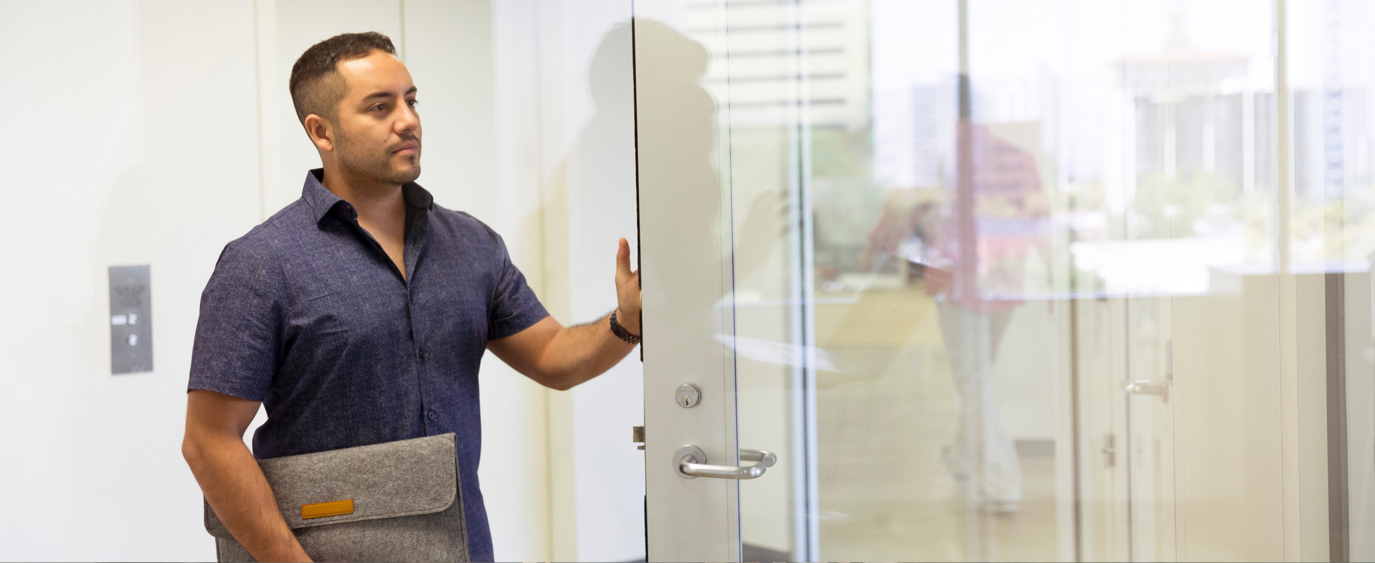Sep 10, 2018
What To Do When You Get Your First “Real” Full-Time Job

So, you’ve finally climbed out of the dish-pit, or broken away from the Wednesday bartending split-shift, or graduated from the cash register to the back office.
In other words, you’ve found a “real” full-time job—hopefully one with benefits, a salary, and a generally predictable schedule. While getting a “real” job is easier said than done, more and more people have managed to find better jobs in recent years, due to the relatively strong economy. Some people are still struggling, though.
Now that you’ve upgraded to full-time status, it’s also time to upgrade your financial strategy, too. Here are some ideas.
Build a budget
Your very first step is to build a new budget, incorporating your expected monthly income and expenses. This is your financial roadmap going forward.
A budget is a financial blueprint, laying out how much money you’re making and what you’re spending it on. Your goal will be to maintain a balance—budget enough to cover all of your expenses (rent, groceries, movie nights, etc.) while having enough left to save and invest with.
Read more: The Easiest Budget You’ll Ever Make
With your budget in hand, these are your next steps.
Open up a savings account and start saving
If you don’t already have one, think about opening up a savings account in addition to checking account, and start saving up an emergency fund. That fund should, ideally, have between three and six months’ worth of expenses.
If you ever lose your job or experience some sort of medical emergency where you’re saddled with expenses for care, this is the fund that you’ll tap into.
You’ll likely have other goals, too, that you’ll want to start saving for, such as buying a car, house, or maybe even an engagement ring. You can open up additional savings accounts, if you want, to save for different goals. But an emergency fund is your highest priority.
Some perspective: 40% of Americans have less than $1,000 in savings, and 28% have nothing saved at all. An emergency fund—even a small one—will put you ahead of the game.
Think about retirement
You’re never too young to start thinking about retirement. Some people are even hanging up their boots in their thirties and forties, by saving a significant portion of their incomes and investing.
Those folks are outliers, but there’s a clear takeaway: Start saving for retirement as early as you can.
If your employer offers a 401(k), enroll. A 401(k) is an employer-sponsored retirement account that allows a company to “match” an employees contributions, often up to a certain percentage of their paycheck. In effect, these matching contributions amount to free money being funneled directly to your retirement savings. Take note, however, that not all employers offer a match.
If your employer does not offer a 401(k), you can open up an individual retirement account, or IRA. IRAs (and their counterpart, Roth IRAs) are retirement accounts that anyone can open to save for retirement, and you can contribute up to $6,000 per year under the age of 50. Over this age, you can contribute additional catch-up amounts to both a 401(k) and an IRA.
You can have both an IRA and a 401(k), although annual contribution limits apply. The point is that you start saving to take advantage of compounding. That’s when the return on the initial principal you’ve invested also earns a return.
You can sign up for an IRA with Stash.
Get insurance
If you’re lucky, your job should (hopefully) provide you with health insurance. Sign up.
Also, consider insuring your personal belongings with a renters insurance policy, or taking out a life insurance policy if you have a family.
Start investing
Finally, make sure you leave some room in your budget for investing.
Like saving for retirement, you may feel that investing is something best left for your future self to deal with. Don’t be fooled, though—it’s all about time in the market, not timing the market. The sooner you save, the more money you’re likely to have, and the better off you’re likely to be.
Start investing monthly, even if small contributions are all you can make. Over time, it can add up. All it takes is $5 to get started with Stash.
Related Articles

The 2024 Financial Checklist: A Guide to a Confident New Year

9 Ways to Celebrate Financial Wellness Month

Budgeting for Young Adults: 19 Money Saving Tips for 2024

The Best Personal Finance Books on Money Skills, Investing, and Creating Your Best Life for 2024

What Is a Financial Plan? A Beginner’s Guide to Financial Planning

How to Save Money: 45 Best Ways to Grow Your Savings





